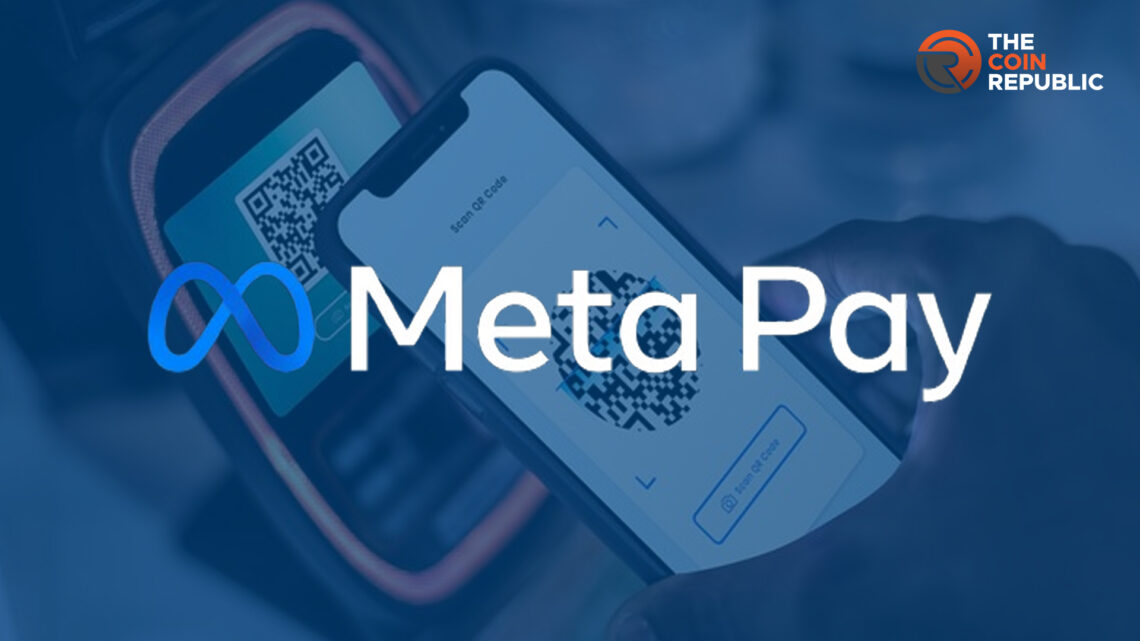- 1 MetaPay allows easy mobile payments through Facebook, Instagram, and Messenger.
- 2 Customers can securely store payment info and check out in just a few clicks.
- 3 Integrates easily with e-commerce platforms like Shopify for smoother transactions.
- 4 It allows businesses to tap a vast meta-user base with no transaction fees.
Simplicity is one of the cornerstones of a successful business, and this is especially true with payments. The easier the payment process, the more likely your consumers will return. Many e-commerce firms have included in-app mobile payment methods, such as Google Pay, Apple Pay, and PayPal, to make payments more accessible for customers.
Meta, which owns Facebook, Instagram, and WhatsApp, provides a payment option that might benefit your business.
Online shopping continues to gain popularity, but complicated payment processes can still hinder conversions. MetaPay aims to simplify payments by enabling customers to breeze through checkout on social media and websites.
Here’s everything you should know about Meta Pay.
What Exactly is MetaPay?
Previously known as Facebook Pay, MetaPay allows people to safely store their payment information on Facebook, Instagram, Messenger, or WhatsApp. They can then use their stored cards or bank account to check out when buying products online or sending payments instantly.
Over 3 billion people actively use Meta’s platforms each month. By tapping into these apps as payment tools, MetaPay provides immense reach for businesses.
How MetaPay Streamlines the Process
The most significant benefit of MetaPay is convenience. When customers purchase an item, they simply choose the MetaPay option and authenticate with their PIN or biometrics like fingerprint or face recognition.
Their payment and shipping data automatically populates from what they’ve saved to their Meta profile, allowing complete checkout in just a couple of taps without tedious form filling.
For businesses, MetaPay integrates easily with most e-commerce platforms and payment processors. As long as you enable the option at checkout, customers logged into Instagram or Facebook can breeze through payment.
Growing Mobile Payments Adoption
According to studies, 49% of online shoppers utilized a mobile wallet to pay in 2022 compared to just 38% the prior year. Services like MetaPay capitalize on this trend toward mobile payments. Customers increasingly expect and prefer easy, app-based checkout.
Merchants can provide multiple convenient payment methods by incorporating MetaPay and options like Apple Pay and Google Pay. Given Meta’s immense user base, many customers will already have stored cards through their Facebook, Instagram, or Messenger accounts.
Bolstering Security Around Payments
Data protection remains crucial for any payment tool. Meta has sought to reinforce security and privacy safeguards after past data scandal fallouts.
The company encrypts all debit and credit card information stored on its platforms. MetaPay leverages top-grade protections and will never share user data without consent. It also sends alerts about any suspicious payment activities.
Evaluating the Pros and Cons
MetaPay offers multiple advantages but also comes with a few limitations to weigh.
Potential Benefits Include:
- Tap into billions of Meta users for more sales reach.
- Enable a quicker, more straightforward checkout experience.
- Integrates smoothly with platforms like Shopify.
- Leverage social media to sell directly to followers.
- Metapay charge nothing for processing transactions. There are no added costs or fees.
Among the Main Drawbacks:
- Limited to the Meta user base; not all customers can utilize it.
- It only works on the backend of some e-commerce websites.
- Lower adoption than payment services like Apple Pay.
- Some privacy concerns around Meta managing payments.
Getting Started with MetaPay
Signing up and getting started is straightforward for businesses leveraging Meta’s tools. Those with a Facebook Shop using Messenger for customer engagement or selling products on Instagram can easily activate MetaPay.
Connect your payment credentials and processor to enable the option at checkout on your website or social channels. Assure customers that their data remains protected throughout transactions.
Presenting MetaPay and other mobile wallets, like PayPal, helps provide multiple payment method choices. While Meta’s payment platform may not fully replace other processors due to its niche audience, it excellently serves social-savvy customers already embedded in Meta’s ecosystem.
Conclusion
As e-commerce grows exponentially, seamless payments are crucial for converting sales. MetaPay allows businesses to turn social media into transaction hubs and reduce checkout friction. Though adoption has yet to be universal, tapping into convenience-minded Meta users can significantly boost a merchant’s reach. Overall, this payment solution facilitates payments for our increasingly mobile-centered world.
Integrating this free platform, backed by solid security and reach across social media channels, makes it a valuable addition to other payment options. MetaPay capitalizes on mobile wallet demand in a distinctly social-forward way.

Amanda Shinoy is one of the few women in the space invested knee-deep in crypto. An advocate for increasing the presence of women in crypto, she is known for her accurate technical analysis and price prediction of cryptocurrencies. Readers are often waiting for her opinion about the next rally. She is a finance expert with an MBA in finance. Quitting a corporate job at a leading financial institution, she now engages herself full-time into financial education for the general public.


 Home
Home News
News










